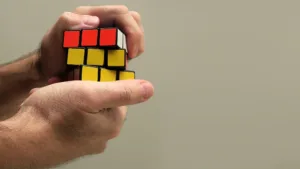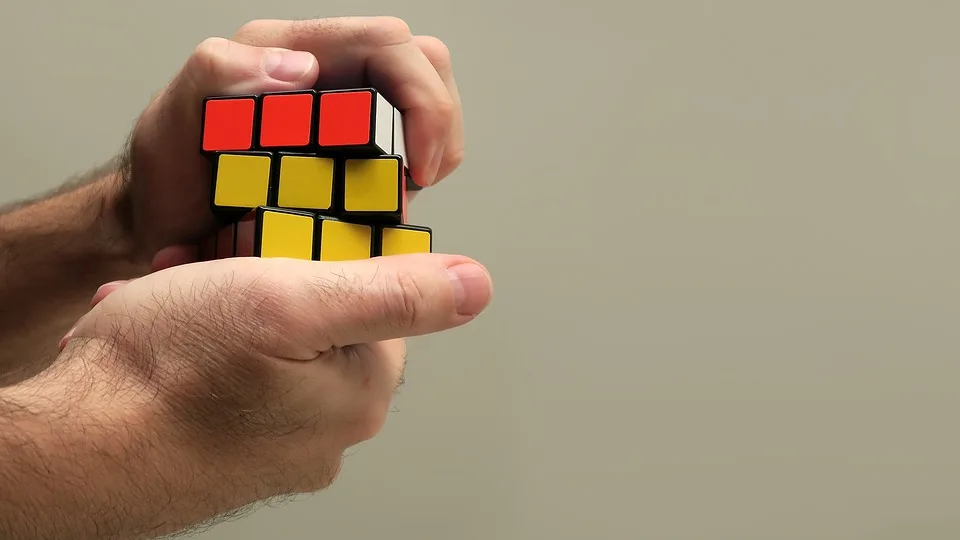How to be a problem solver : 5 Powerful Tools to Become a Master Problem Solver
How to be a problem solver, In today’s rapidly evolving world, the ability to effectively solve problems is a invaluable skill that transcends all aspects of life – personal, professional, and societal. Problems are inevitable, but it is our ability to approach them with a strategic and innovative mindset that determines our success in overcoming challenges and achieving our goals.

How to be a problem solver : 5 Powerful Tools to Become a Master Problem Solver
Let’s provide you with a deep understanding of the problem-solving process, equip you with practical strategies and techniques, and inspire you to embrace a mindset that thrives on identifying and addressing complex issues.
Understanding the Fundamentals of Problem-Solving
At its core, problem-solving is a systematic process of identifying and defining a problem, gathering relevant information, generating potential solutions, evaluating alternatives, and implementing the most effective solution. Effective problem-solving requires a combination of analytical thinking, creativity, and perseverance.
Embracing a Problem-Solving Mindset
Developing a problem-solving mindset is the foundation for mastering this essential skill. This mindset is characterized by an insatiable curiosity, a willingness to challenge assumptions, and a commitment to continuous learning and self-improvement.
Cultivate a growth mindset by recognizing that problems are opportunities for growth and personal development. Embrace intellectual humility by acknowledging the limitations of your knowledge and recognizing that there is always room for improvement.
Actively seek out diverse perspectives and remain open to changing your opinions when presented with compelling evidence. Approach challenges with a positive attitude, recognizing that every problem has a solution, even if it is not immediately apparent.

1. How to be a problem solver : Developing Essential Problem-Solving Skills
Effective problem-solving requires a combination of cognitive and interpersonal skills that can be developed and refined through practice and intentional effort. These skills include:
1. Analytical Thinking: The ability to break down complex problems into manageable parts, identify patterns, and critically evaluate information.
2. Creative Thinking: The ability to generate novel and innovative solutions by combining ideas in unique ways and thinking outside the box.
3. Decision-Making: The ability to weigh the pros and cons of different solutions, consider potential consequences, and make well-informed choices.
4. Collaboration and Communication: The ability to work effectively with others, share ideas, and communicate clearly and persuasively.
5. Adaptability and Resilience: The ability to remain flexible, pivot strategies when necessary, and persevere in the face of setbacks and obstacles.

2. How to be a problem solver : Applying Problem-Solving Techniques
To effectively navigate the problem-solving process, it is essential to have a toolbox of proven techniques and strategies at your disposal. Some of the most valuable techniques include:
1. Root Cause Analysis: A structured approach to identifying the underlying causes of a problem, rather than addressing surface-level symptoms.
2. Mind Mapping: A visual technique for brainstorming and organizing ideas, allowing you to explore connections and relationships between different elements of a problem.
3. SWOT Analysis: A strategic planning tool for evaluating the Strengths, Weaknesses, Opportunities, and Threats associated with a particular problem or solution.
4. Design Thinking: A human-centered approach to problem-solving that emphasizes empathy, ideation, prototyping, and iteration.
5. Six Thinking Hats: A parallel thinking technique that encourages exploring a problem from multiple perspectives, fostering creativity and reducing cognitive biases.
Mastering these techniques and applying them appropriately can enhance your problem-solving abilities and increase the likelihood of finding effective and sustainable solutions.

3. How to be a problem solver : Overcoming Cognitive Biases and Roadblocks
One of the greatest challenges in problem-solving is overcoming cognitive biases and mental roadblocks that can impede our ability to think critically and objectively. Some common biases and roadblocks include:
1. Confirmation Bias: The tendency to seek out and favor information that confirms our existing beliefs or assumptions.
2. Anchoring Bias: The tendency to rely too heavily on the first piece of information encountered, which can influence subsequent judgments and decisions.
3. Functional Fixedness: The cognitive limitation that prevents us from perceiving an object or concept as anything other than its traditional or intended use.
4. Bounded Rationality: The limitation of our cognitive resources, which can lead to decision-making based on incomplete or imperfect information.
To overcome these biases and roadblocks, cultivate self-awareness, seek out diverse perspectives, and actively challenge your assumptions. Embrace intellectual humility and remain open to changing your mind when presented with compelling evidence.

4. How to be a problem solver : Fostering a Problem-Solving Culture
While developing problem-solving skills is a personal responsibility, creating an environment that fosters and encourages problem-solving is equally important. Organizations, teams, and communities can cultivate a culture of problem-solving by:
1. Encouraging open dialogue and respectful debates.
2. Providing opportunities for collaborative problem-solving and cross-functional collaboration.
3. Promoting creativity, innovation, and intellectual risk-taking.
4. Valuing diverse perspectives and embracing differing viewpoints.
5. Celebrating and rewarding successful problem-solving efforts.
By nurturing an environment that values problem-solving, we can inspire others to embrace this mindset and contribute to a more innovative and solution-oriented society.

5. How to be a problem solver : Applying Problem-Solving in Real-Life Scenarios
Problem-solving is not confined to academic or professional realms; it is an invaluable skill that can be applied across various domains of life. Here are some practical applications:
1. Personal Growth: Apply problem-solving techniques to identify and overcome personal challenges, set and achieve goals, and make informed decisions that align with your values and aspirations.
2. Relationships and Conflict Resolution: Approach interpersonal conflicts and disagreements with a problem-solving mindset, seeking to understand the root causes and finding mutually satisfactory solutions.
3. Career and Entrepreneurship: Embrace problem-solving as a competitive advantage in your career or business, identifying opportunities, addressing customer needs, and driving innovation.
4. Community and Social Impact: Contribute to solving societal challenges by applying problem-solving skills to address complex issues, such as poverty, inequality, and environmental sustainability.
By integrating problem-solving into all aspects of your life, you can unlock your full potential, foster personal growth, and make a positive impact on the world around you.

6. How to be a problem solver : Continuous Learning and Improvement
Problem-solving is an ongoing journey of intellectual exploration and self-improvement. To sustain and enhance your problem-solving abilities, embrace a growth mindset and commit to continuous learning.
Seek out opportunities to challenge your beliefs, expose yourself to diverse perspectives, and engage in activities that stimulate critical thinking and creativity. Read widely, participate in thought-provoking discussions, and regularly reflect on your problem-solving processes and decision-making strategies.
Additionally, seek feedback from others and remain open to constructive criticism. By continuously refining your problem-solving skills, you can stay adaptable, resilient, and better equipped to navigate the complexities of an ever-changing world.

Watch the video : How to be a problem solver
Conclusion
Mastering the art of problem-solving is a transformative journey that empowers us to overcome challenges, drive innovation, and contribute to a more sustainable and prosperous world. By embracing the principles and strategies outlined in this comprehensive guide, you can unlock your full potential as a problem-solver and navigate the complexities of modern life with clarity, creativity, and resilience.
Remember, problem-solving is not merely a set of techniques but a mindset – a commitment to intellectual curiosity, open-mindedness, and a relentless pursuit of solutions. Cultivate this mindset, hone your problem-solving abilities, and embrace the power of strategic thinking and innovation to shape a better future for yourself and the world around you.
FAQs
1. What is the difference between problem-solving and decision-making?
Problem-solving and decision-making are closely related but distinct processes. Problem-solving involves identifying and addressing a specific issue or challenge, while decision-making is the act of choosing among various alternatives or courses of action to resolve the problem. Effective problem-solving often involves making informed decisions based on a thorough analysis of the problem and potential solutions.
2. Can problem-solving skills be learned, or are they innate abilities?
While some individuals may have a natural inclination towards problem-solving, these skills can be learned and developed through intentional effort and practice. By exposing yourself to diverse challenges, engaging in critical thinking exercises, and consciously applying problem-solving techniques and strategies, you can cultivate and refine your problem-solving abilities over time.
3. How can I overcome the fear of failure and embrace risk-taking in problem-solving?
Overcoming the fear of failure and embracing risk-taking requires cultivating a growth mindset and reframing your perspective on failure. Recognize that failure is an opportunity for learning and growth, and that taking calculated risks is often necessary for innovation and finding effective solutions. Celebrate small wins, learn from setbacks, and maintain a positive attitude focused on continuous improvement.
4. How can I encourage problem-solving skills in my team or organization?
To encourage problem-solving skills in your team or organization, create an environment that values open communication, collaboration, and intellectual risk-taking. Provide opportunities for cross-functional problem-solving sessions, encourage diverse perspectives, and celebrate successful problem-solving efforts. Additionally, lead by example by modeling a problem-solving mindset and actively involving your team in addressing challenges.
5. Can problem-solving be detrimental in certain situations?
While problem-solving is generally beneficial, there may be situations where excessive analysis or overthinking can lead to decision paralysis or missed opportunities. In time-sensitive or high-pressure scenarios, it’s important to strike a balance between thorough problem-solving and intuitive decision-making based on experience and available information. Developing situational awareness and adapting your approach accordingly is crucial.
Remember, problem-solving is a lifelong pursuit that requires continuous effort, intellectual humility, and a genuine commitment to personal growth and finding effective solutions. Unleash the power of problem-solving, and unlock your full potential to navigate the complexities of our world with wisdom, creativity, and resilience.
Must Read : How to be a critical thinker
How to be a critical thinker : 5 Powerful Tools to Become a Master Thinker














1 comment